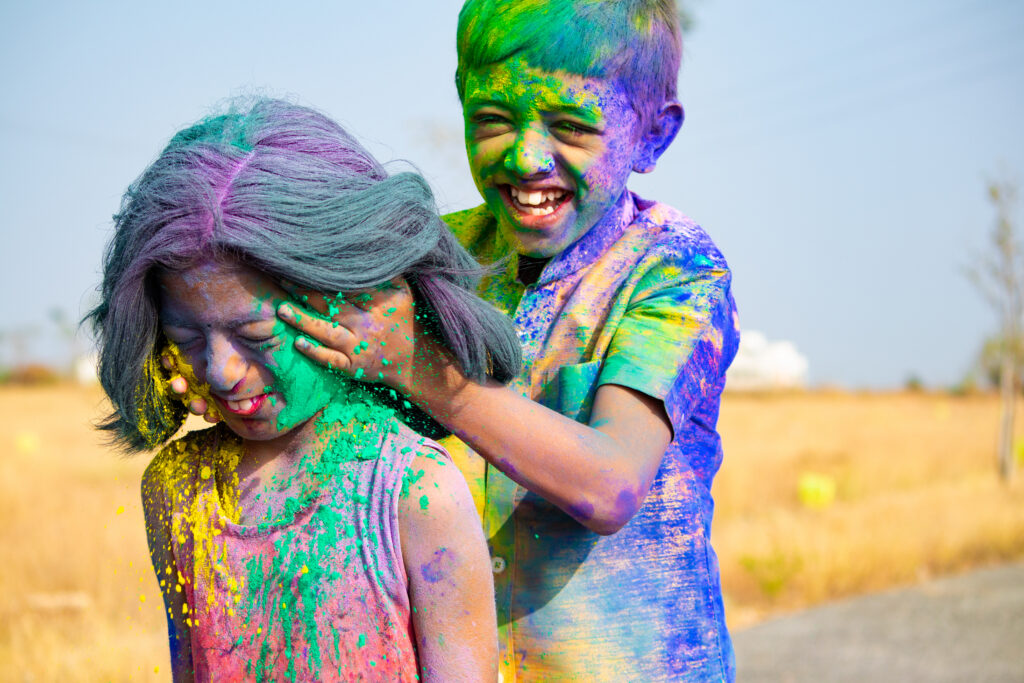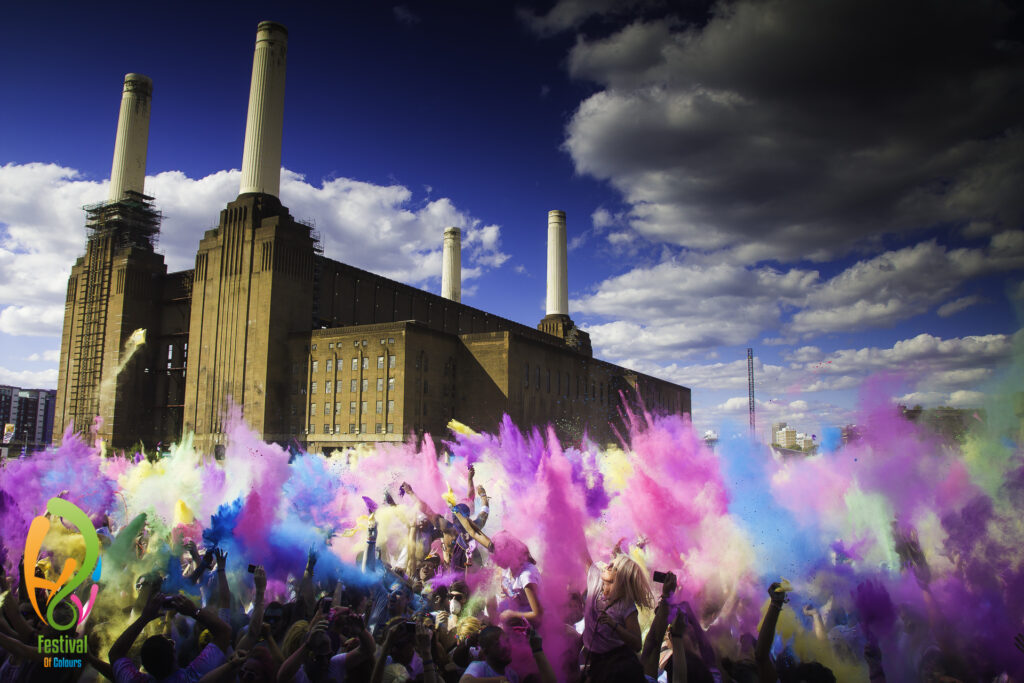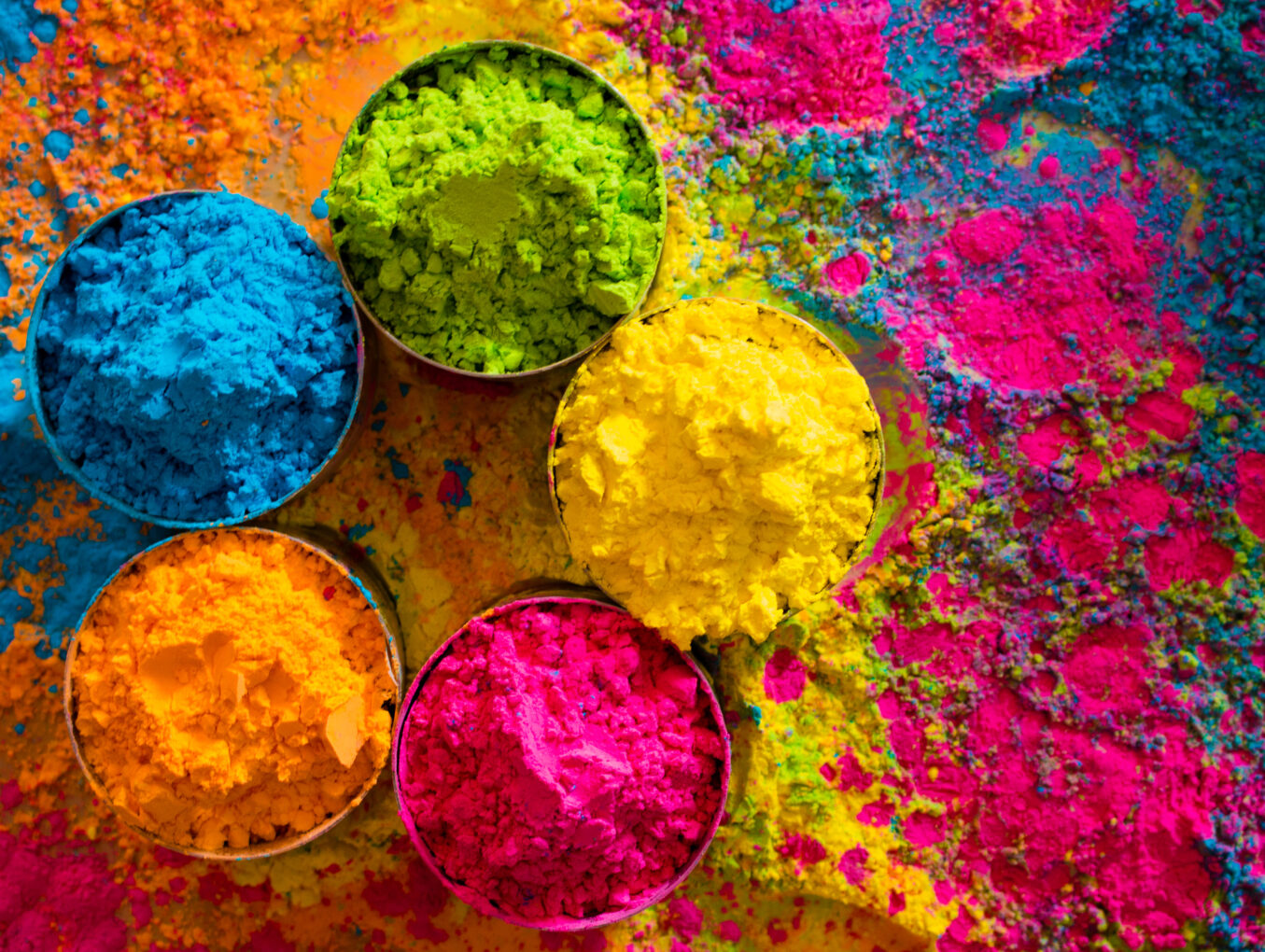Coming up on March 18th is Holi, the festival of colours. This joyous occasion celebrates the end of winter and the coming of spring and is an opportunity to forgive and forget. People reconnect with their neighbours and their community and repair broken and lapsed relationships against the colourful backdrop of Holi.
The most iconic component of Holi is its powder colours. The day of the festival is a free-for-all colour fight with people of all ages smearing each other with colours and drenching each other in coloured water from water guns and water balloons. It happens all over the city, and everyone is fair game!
There’s usually a group travelling between locations and singing and playing drums so people can dance during the festival, adding to the celebratory atmosphere. By late morning, everyone is covered with colours from head to toe and they break for food, enjoying some traditional treats like gujiya and mathri. Later in the evening, people dress up in their best clothes and go out to visit their friends and family.

Holi Origin Stories
As is the case for many festivals originating in India, there are many regional variations on the story of the origins of Holi.
A popular one discusses an arrogant King, Hiranyakashipu, who had been given a gift by the gods that made him almost immortal. He demanded to be worshipped, but his son Prahlada remained devoted to Vishnu. The king punished him but was unable to shake his beliefs. Finally, his aunt Holika tricked Prahlada into sitting on a pyre with her with a fire-proof cloak wrapped around her, but when the fire was lit the cloak wrapped itself around Prahlada instead and Holika was burned. Vishnu, coming in at the end of the tale to restore order, was able to circumvent the rules of the King’s immortality and kill him. Holi celebrates this victory of good over evil.
Another story is about Krishna, who worried whether the fair-skinned Radha would like him because of his dark skin. His mother then suggested that he go to Radha and ask her to colour his skin whatever colour she wanted. She agreed, and they became a couple. This playful recolouring of Krishna’s face is commemorated as Holi, especially in the Braj region of India.
#MulticulturalBritain
The joyful and fun nature of Holi means it has become popular all over the world, and the UK is no exception. As one of Britain’s largest ethnic minorities Indian culture has had a great influence over the UK, and Holi festivals take place across the country every year in parks and open spaces in areas with large Hindu populations. This year, people in London will be able to experience the magic of Holi in places like Plaistow, Durham, Dagenham and Kingston, with more events happening around the country. There are even events – like the Colour Run – inspired by the colour-throwing of Holi that aren’t even affiliated with any religious organisations! Holi has truly been embraced.

